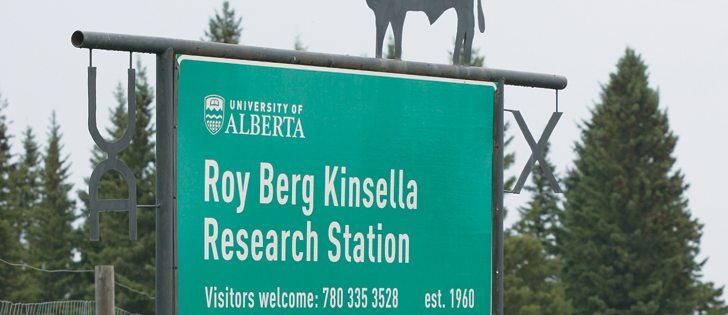Crossbreeding improvements | Roy Berg recognized for his commitment and dedication to the industry in the face of skepticism
KINSELLA, Alta. — Almost half a century after the late Roy Berg began his groundbreaking cattle breeding research, a research station established to prove the importance of cross breeding and gen-etic selection was renamed in his honour.
The University of Alberta’s Kinsella Research Station was re-named the Roy Berg Kinsella Research Station Aug. 13.
“It is extremely fitting that we dedicated this research facility, where Dr. Berg has revolutionized the beef cattle industry, in his name,” said Stan Blade, dean of the University of Alberta’s faculty of agriculture, life and environmental sciences.
Read Also

Canadian Food Inspection Agency slammed for handling of bovine tuberculosis case
The federal government leans heavily on producers to “take one for the team” and risk their livelihoods without any reassurance of support.
While working at the Kinsella Research Station, Berg proved beef production increased dramatically with hybrid vigour and crossbreeding.
Within 10 years, two lines of cattle at the Kinsella ranch outperformed the purebred herd. One crossbred line was 30 percent more productive and the second was 40 percent more productive.
“He knew he was right. He knew hybrid vigour would create this remarkable opportunity for productive and efficient cattle,” said Blade, during a field day at Kinsella.
During the 1950s, pure breeding was king, said Mick Price, professor emeritus at the University of Alberta and a colleague of Berg’s.
“The British pure breeds were everything and the measure of quality was in the show ring and Roy didn’t like that at all,” said Price.
Berg proposed the provincial government use $200,000 from the Horned Cattle Trust Fund to buy the 5,000 acre ranch and two herds of cattle to prove his point.
Using a purebred herd and a crossbred herd at the ranch, Berg selected for the same traits: fertility in females and growth in bulls in both herds.
Every heifer was exposed to a bull and had to have a calf by her second birthday and a calf every year after or she was gone. The bulls weren’t castrated and after weaning were put on a 140-day feed test. The best bulls became sires for the next generation.
“It took about 10 years and it was beyond all discussion,” said Price.
Kinsella became the proverbial Mecca for many scientists, he said. By 1991, more than 600 scientific publications and extension articles came out of the ranch that Berg spearheaded.
Harlan Fultan, ranch manager from 1961 to 1974, said Berg selected by numbers, not by looks.
“By selecting as he did, he selected by weight and be damned to the looks. Well some of the looks were pretty damned tough, I tell you. I remember one of the top gaining bulls. He was black and he was tall and he was sickle hocked and a head on him like a nail keg.
“Then a year or so later, his calves were right next to him and they were the most beautiful looking bunch of calves you ever saw in your life,” said Fultan.
Lorne Babiuk, vice-president of research at the University of Alberta, said renaming the ranch sends an important message.
“It highlights the difference that one committed and determined researcher can make, even in the face of strong opposition and significant skepticism,” said Babiuk.
Ruth Ball, Berg’s daughter, said her father would be “humbled and proud” of the distinction.
“I never dreamed I would be standing here today seeing so many people whose lives Dad touched and hearing about an industry transformed because of his re-search in crossbreeding.”















